Sambucus canadensis
Native elderberry bush with black-purple berries
Sambucus canadensis American black elderberry
Add to MyPlants View Locations
This multi-stemmed native shrub is a common perennial woody plant. It is still classified as a separate species by many botanists, but some consider it a variety of the European black raspberry and give it the scientific name Sambucus nigra ssp. canadensis. It is one of the few erect shrubs with opposite leaves that are pinnately compound. This is helpful in distinguishing it from other species that might produce small blue berries.
The large leaves (4-12 inches long) consist of 5-9 toothed, lance-shaped or elliptical leaflets. The twigs are heavy with a large amount of central white pith. The plant commonly has small wart-like lenticels on the branches.
The American black elderberry can grow 3 to 13 feet high. It is usually found in sunny areas and is most common in moist areas like marshes or damp forest edges, though it can also be found in areas that are drier. The branches tend to arch out from the base.
The flowers are small and white and borne in dense flat-topped clusters at the ends of the upper stems. The flowers have a pleasant somewhat musky scent, but crushed foliage and shoots have an unpleasant odor. Individual flowers have five petals and five stamens. The blooming period is June and July. The berries (drupes) are purple-black and small - mostly less than 3/16 of an inch in diameter, but contain 3-5 seeds. These form from August to October.
The leaves twigs, roots and unripe fruit of the plant are reported to produce toxic, but not deadly, hydrocyanic acid. The ripe fruits, however, are edible and used to make jam, jelly, pies, and wine. The taste is reported as sweet but with a slightly bitter aftertaste. There are 43 known species of birds that will feed on the berries. The seeds are not digested and the birds thus help with seed distribution.
The American black elderberry is often cultivated for its fruit and as an ornamental. It can easily be grown from stem cuttings and spreads naturally by the growth of rhizomes. The dense branches provide cover for wildlife.
Habitat & Range
Common in woods, fields, stream banks, moist fields, and swamps.
Present throughout the state.
Range: Grows throughout much of North America east of the Rocky Mountains and in parts of the West.
| EMP: | FAC |
|---|---|
| NCNE: | FACW |
Phenology
Flowers June through early July.
Fruits August through September.
Plant Codes
S-rank: S5 (Secure)
G-rank: G5 (Secure)
Sambucus canadensis American black elderberry
Synonyms: Sambucus nigra, Sambucus nigra ssp. canadensisAdd to MyPlants View Locations
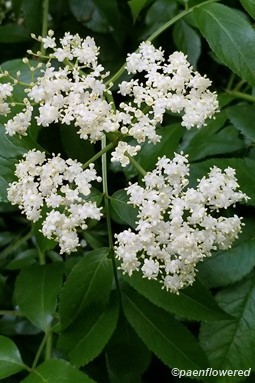
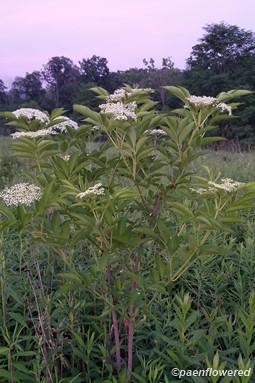
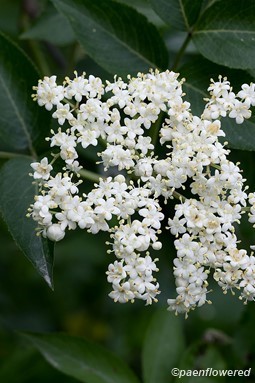
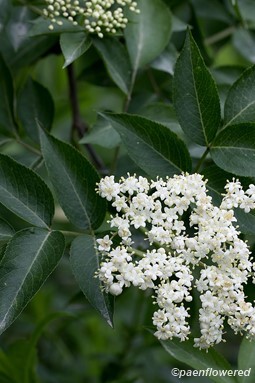
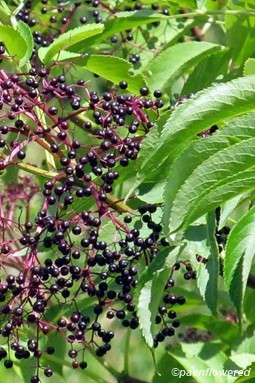



Comments
Have you spotted this plant in your area? We'd love to hear about your experience! Share your comments or questions about the plant below. Comments are moderated before posting.